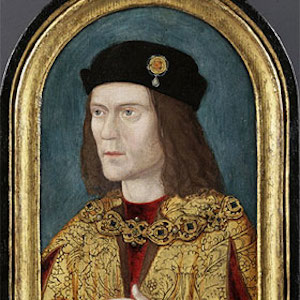King Richard III Cause Of Death Revealed: Royal Likely Suffered Blows To The Head
King Richard III’s cause of death could have been determined from analysis of his centuries old remains.
King Richard III Cause Of Death
It's long been known that King Richard III, the last English king to die in battle, died during the battle of Bosworth on Aug. 22, 1485. However, what the late king's cause of death was has long been a mystery – partially due to the fact that his remains had been lost until they were unearthed in 2012. Upon receiving King Richard III's remains, a team at the University of Leicester conducted a variety of tests in a study to determine exactly what led to the king's demise.
“Richard’s injuries represent a sustained attack or an attack by several assailants with weapons from the later medieval period,” said Sarah Hainsworth, a University of Leicester professor and a co-author of the study. “The wounds to the skull suggest that he was not wearing a helmet, and the absence of defensive wounds on his arms and hands indicate that he was otherwise still armored at the time of his death."
The 11 wounds that Richard sustained were likely inflicted by a variety of weapons, both leading up to and after his death. Most likely, one of the wounds to his skull was the fatal blow. Accounts of his death claim that his horse had gotten stuck in a marsh, forcing him to dismount, after which he was attacked by a number of enemy soldiers. It is thought that he was likely attacked from above, meaning he could have been kneeling or otherwise on the ground when attacked.
“Medieval battlefields saw an array of weapons used, from swords, battle hammers, maces, arrows and even early firearms,” Robert Woosnam-Savage, curator of European edged weapons at the Royal Armouries Museum in Leeds, told the BBC. “Richard probably got within a few yards of Henry before his horse probably became stuck in marshy ground or was killed from underneath him. On foot, with foot soldiers closing in, the fight becomes a close infantry melee.”
Richard III's remains were found in August 2012 under a parking lot in Leicester. By 2013, DNA testing provided proof that the remains belonged to the king.
RELATED ARTICLES
Get the most-revealing celebrity conversations with the uInterview podcast!







Leave a comment